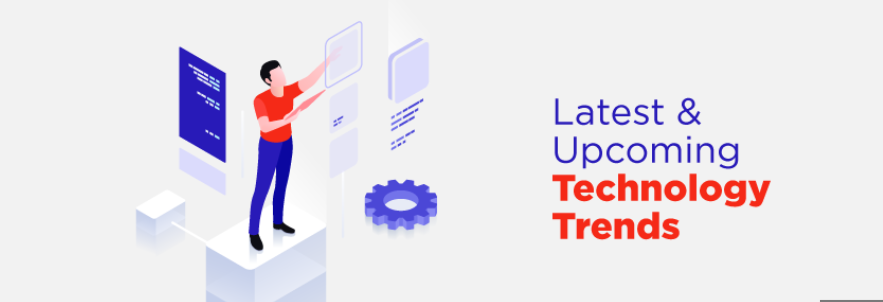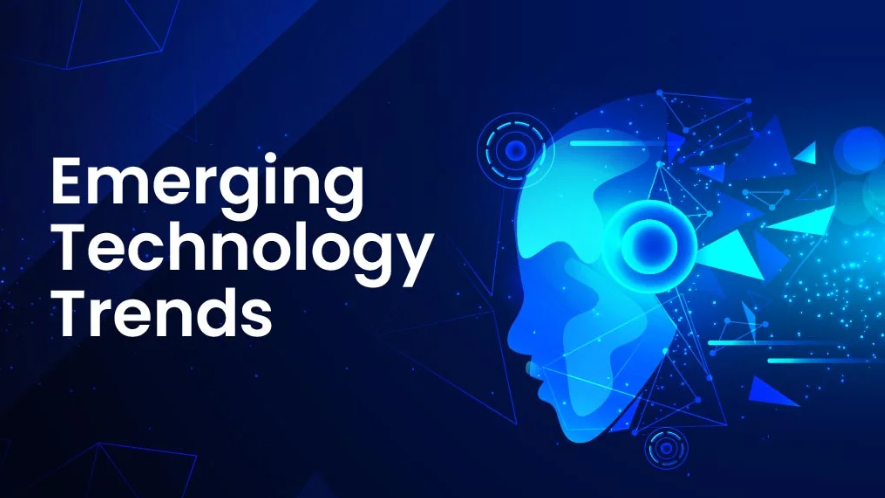In daily life, technology is essential for increasing productivity, spurring innovation, and raising standards of living. It simplifies everyday tasks, solves complicated issues, and connects people all over the world. It also shapes industries.
Emerging technologies are bringing about a change in a number of industries, stimulating innovation, and changing daily life. Technological developments in biotechnology, blockchain, quantum computing, and artificial intelligence are important trends. These technologies are changing how businesses operate, improving productivity, and opening up new avenues for expansion. It is essential to stay current with these innovations in order to properly utilise them and sustain competitiveness in a market that is changing quickly.
The top 10 Emerging technologies are as follows:
Artificial Intelligence (AI) and Machine Learning: Automation, data analysis, and predictive skills are transforming businesses through the use of artificial intelligence (AI) and machine learning.
Blockchain: Improving data management and transaction security, transparency, and efficiency.
Quantum Computing: Unprecedented processing capacity is provided by quantum computing to address challenging issues.
5G Technology: Growing the Internet of Things and enabling faster, more dependable internet connections.
Internet of Things (IoT): Linking systems and gadgets to create data-driven, intelligent environments.
Virtual reality (VR) and augmented reality (AR): Both are transforming training, gaming, and remote work.
Biotechnology and CRISPR: Gene editing, personalised treatment, and medical research are all being advanced by biotechnology and CRISPR.
Renewable Energy Technologies: advancing environmentally friendly energy sources such as wind, solar, and energy-storing batteries.
Automation and robotics: Increasing accuracy and efficiency in the manufacturing, healthcare, and service sectors.
Edge computing: Bringing compute closer to data sources to improve response times and data processing.
Upcoming Technologies

1. Human Augmentation
The use of technology to improve the capabilities of the human body is known as human augmentation. This can include implants that increase sensory perception or wearable technology that boosts physical performance.
Through the use of technology, human augmentation improves both physical and cognitive capacities, leading to major improvements in productivity, healthcare, and quality of life. This covers prosthetics, wearable technology, and neural implants that enhance mental capacity, movement, and sensory perception. Augmentation seeks to overcome infirmities, improve performance, and even push the boundaries of human potential by fusing technology with the human body.
Possible Effect: new types of human-computer connection, improved physical and cognitive capacities, and an improved quality of life for people with disabilities.
2. Autonomous Things
Autonomous things include robots, drones, and vehicles that can operate without human assistance. These devices use AI to do tasks in dynamic environments.
The term autonomous things (AuT) refers to systems and gadgets that use AI, machine learning, and sensors to function autonomously. Drones, autonomous vehicles, and robotic systems having the ability to make decisions and carry out tasks without human assistance fall under this category. In a variety of industries, including manufacturing, logistics, and transportation, AuT boosts productivity, security, and convenience while spurring innovation and changing how we use technology in daily life.
Potential Effects: Better safety in risky situations, increased efficiency in logistics and delivery services, and developments in autonomous vehicles.
3. Distributed Cloud
The term distributed cloud describes how public cloud services are spread across many physical locations, with the public cloud provider continuing to be in charge of operations, governance, and evolution.
Distributed cloud keeps data and apps closer to their users by distributing cloud services over multiple sites. This approach facilitates regulatory compliance, reduces latency, and enhances performance through localised data storage. Distributing cloud resources can help businesses become more robust, scalable, and reliable. This enables efficient workload management in a range of contexts and provides a seamless user experience everywhere.
Possible Effect: Improved resilience of cloud services, decreased latency, and increased compliance with data sovereignty rules.
4. Digital Twins
A digital twin is a virtual replica of an actual system or thing. This technology enables real-time asset monitoring and simulation.
Digital twins are virtual copies of actual systems, processes, or objects that allow for real-time analysis, optimization, and monitoring. Digital twins increase productivity, forecast maintenance needs, and improve decision-making by imitating real-world situations. Often employed in the fields of manufacturing, healthcare, and smart cities, they serve as a link between the digital and physical realms, stimulating creativity and offering insightful information for increased efficiency and dependability.
Potential Effects: Better processes for product development, better infrastructure management and urban planning, and better upkeep and operation of industrial equipment.
5. Extended Reality (XR)
The term extended reality, which refers to immersive experiences that blend the real and virtual worlds, includes mixed reality (MR), augmented reality (AR), and virtual reality (VR).
Virtual reality (VR), augmented reality (AR), and mixed reality (MR) are all included in extended reality (XR), which combines real and virtual worlds. Immersion experiences in gaming, training, education, and remote collaboration are made possible by XR technologies. Through the creation of fully virtual environments or the overlaying of digital data over the actual world, XR raises user engagement, boosts learning objectives, and provides creative solutions for a range of sectors.
Potential Impacts: Revolutionary applications in training and education, immersive entertainment experiences, and new ways to interact with digital content.
6. Smart Fabrics
Smart fabrics integrate electronics into textiles to offer usefulness. These textiles have the capacity to track health, change colour, and store energy.
Intelligent textiles use electronic and digital elements into textiles to provide interactive and flexible features. These textiles can improve comfort and performance, monitor health parameters, and adapt to the surroundings. Smart fabrics are used in fashion, sports, and healthcare. They offer real-time data, increase safety, and facilitate creative design, turning regular clothes into tech-enhanced, multipurpose outfits that adapt to users’ demands.
Possible Effects: Innovations in wearable technology, interactive clothing, and inventive methods of health monitoring.
7. Neuromorphic Computing
Neuromorphic computing creates more powerful and effective computer systems by modelling the neural architecture of the human brain.
Neuromorphic computing uses specialised hardware and algorithms to simulate the structure and functions of the human brain. The improved cognitive functions, energy efficiency, and adaptability in computing activities are the goals of this technology. Neuromorphic systems, which push the limits of conventional computing and promise substantial improvements in artificial intelligence, excel in pattern recognition, sensory processing, and learning by simulating neural networks.
Potential Effects: Development of more intelligent autonomous systems, enhanced computing energy efficiency, and breakthroughs in AI and ML.
8. Space Technology
There are new avenues for research and business being opened up by the development of new space technology, such as space tourism and reusable rockets.
The equipment and methods used for satellite communication, research, and space exploration are all included in the field of space technology. This covers space stations, satellites, rockets, and spacecraft. Space technological breakthroughs make it possible to observe Earth, communicate globally, and conduct scientific research. It has a significant impact on science, business, and everyday life. It also stimulates innovation and promotes commercial ventures such as space tourism.
Potential Effects: Better access to space for business and research, improvements in satellite technology, and the possibility of human habitation of other worlds.
9. Green Technology
The goal of green technology is to counteract climate change and resource depletion by creating environmentally friendly and sustainable solutions.
The intention of green technology is to reduce environmental effects through sustainable solutions. It includes energy-efficient appliances, sustainable agricultural methods, and renewable energy sources like solar and wind. Green technology seeks to protect the environment, lessen carbon footprints, and advance eco-friendly inventions. It tackles global issues like pollution and climate change and promotes a sustainable future by incorporating eco-friendly designs and procedures.
Potential Impact: Developments in sustainable agriculture, renewable energy, and lowering carbon footprints across all sectors of the economy.
10. Brain-Computer Interfaces (BCIs)
Direct communication between the brain and external equipment is made possible by BCIs. This technology has the power to completely change how humans communicate with machines.
Brain-computer interfaces, or BCIs, provide direct brain-to-external system connection by translating cerebral activity into commands. In order to assist those with disabilities, medical professionals employ brain-computer interfaces, or BCIs. They enhance cognitive functioning and give paraplegics the ability to operate prosthesis and communicate. This technology has the power to transform human-machine relationships and healthcare, as well as to increase human potential and open up new channels for technological communication.
Potential Effects: Better human-computer interface, the possibility of psychic connection, and novel therapies for neurological conditions.
Conclusion
In conclusion, a number of industries stand to benefit greatly from the top 10 upcoming technologies, which include blockchain, AI, quantum computing, and human augmentation. These developments have the potential to significantly advance manufacturing, healthcare, and daily living by improving efficiency, connectivity, and sustainability. It’s critical that we adopt new technologies with knowledge and flexibility, making the most of their potential for good. Businesses and individuals may prosper in a world that is becoming more digitally linked and digitised by incorporating these cutting-edge technologies, paving the way for previously unimaginable opportunities in the future.
